Smoke damage is a type of property damage caused by smoke from burning materials. This can include damage to walls, furniture, carpeting, window treatments, and other home items.
Smoke damage can be identified by the presence of soot or discoloration on walls and surfaces, as well as an unpleasant smell in the air. An unmistakable sign of smoke damage is when it affects your belongings and clothing, causing them to become brittle or discolored.
It’s important to act quickly once smoke damage is identified in order to prevent further destruction. The first step in mitigating smoke damage is to ventilate the affected area by opening all windows and doors for several hours, if possible.
This can help reduce odors and airborne particles that cause staining on surfaces. Cleaning should begin as soon as possible using appropriate cleaning products that are designed specifically for smoke residue removal.
Professional restoration services may also be needed depending on the severity of the smoke damage.
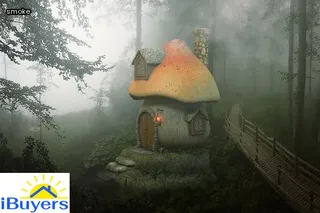
Smoke damage can cause a variety of problems in your home, with effects ranging from odor and discoloration to corrosion and even structural deterioration. It is important to identify the type of smoke that has damaged your home so that you can determine the necessary steps to take for proper mitigation.
The two main types of smoke damage are wet and dry smoke, each having its own distinct characteristics. Wet smoke is produced at lower temperatures and is typically thicker, stickier, and more difficult to remove.
Dry smoke arises from higher temperature fires and produces a lighter, powdery residue that can be easier to clean up. Both types of smoke can cause strong odors, discoloration of walls and fabrics, corrosion of metal surfaces, pitting in wood furniture, peeling paint or wallpaper, staining on carpets and rugs, shrinkage in clothing materials like wool or cotton, and warping or cracking in wooden structures.
Mitigation requires specialized equipment such as air scrubbers and ozone machines as well as deep cleaning techniques for carpets, fabrics, walls, furniture surfaces - all depending on the extent of the damage caused by the specific type of smoke.
Smoke pollution in the home can be a serious health hazard and lead to extensive damage, both to the structure of your house and to your possessions. Smoke is made up of tiny particles that are harmful when inhaled and can be spread quickly throughout your house if left unchecked.
The most common source of smoke pollution in the home is from burning wood, coal, oil, or gas for heating or cooking. The smoke particles released from these sources contain toxins such as benzene, formaldehyde, arsenic and carbon monoxide which can cause long-term health problems if inhaled in high concentrations.
Additionally, smoke can damage carpets, furniture, walls and other surfaces by staining them with soot and discoloring fabrics. To minimize risk of smoke pollution in the home it is important to identify potential sources and take steps to mitigate the effects.
This includes regularly cleaning out vents and chimneys, installing air filters on vents or fireplaces, avoiding burning materials such as plastics or treated wood indoors, and making sure that all appliances are functioning properly.
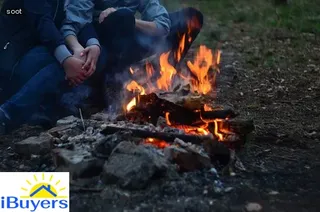
When a home suffers smoke damage, it can be difficult to know how to effectively reverse the effects. Knowing how to identify and mitigate smoke damage is essential for homeowners looking to restore their property.
It's important to remember that smoke damage can affect many different surfaces in the home, including walls, floors, furniture and clothing, so a comprehensive approach should be taken when attempting to reverse such damage. First and foremost, it is necessary to identify the source of the smoke damage in order to properly address the issue.
Once this has been determined, the next step is to thoroughly clean all affected surfaces using a combination of vacuuming, scrubbing and chemical solutions. In some cases it may also be necessary to use special cleaning methods such as ozone treatment or thermal fogging in order to fully remove the smoke residue from carpets and other soft furnishings.
Finally, if any structural damages have occurred due to fire or smoke inhalation then these should also be addressed by a professional contractor who can assess the extent of repairs needed and provide an appropriate repair solution. Taking these steps will help ensure that your home is restored back to its pre-smoke condition as quickly as possible.
Smoke stains and odors can be difficult to remove, especially if they’ve been left for a long time. One of the first steps in identifying and mitigating smoke damage is to determine the source of the smoke.
If it’s coming from an indoor fireplace, wood burning stove, or similar appliance, it will generally be less intense than smoke from a larger fire. Once the source has been identified, it’s important to take immediate action to begin cleaning the affected area.
Depending on the material that has been damaged by smoke, this may involve vacuuming, wiping down walls and ceilings with damp cloths, and using specialized cleaning solutions designed to break up soot and other debris. In addition to physical removal of smoke-related debris, it may also be necessary to use deodorizers or air purifiers to reduce any lingering odors.
Following these steps can go a long way towards successfully removing smoke stains and odors from your home.
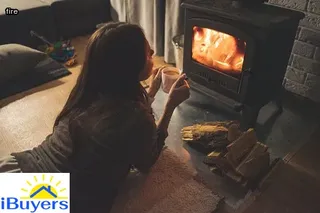
Reaching out for professional help is essential when it comes to identifying and mitigating smoke damage in your home. A restoration expert can conduct a thorough inspection of the property, detecting any signs of smoke or soot damage that would be too difficult for the average homeowner to recognize.
Additionally, a professional will have the necessary tools and expertise to remove any residue safely and effectively, ensuring that all traces of smoke are eliminated from the area. Furthermore, a qualified technician can provide advice on preventing further damage in the future by advising homeowners on proper ventilation and other preventative measures.
In short, professional help is an invaluable resource when it comes to addressing smoke damage within your home.
Living in an environment exposed to smoke can present a variety of health risks for you and your family. Smoke damage can affect indoor air quality, leading to respiratory issues, headaches, and other physical symptoms.
In addition, long-term exposure to smoke can increase the risk of developing cancer and heart disease. It is important to identify and mitigate smoke damage as soon as possible in order to protect yourself and your family from these potential health risks.
The first step is to inspect your home for signs of smoke damage such as discolored walls or ceilings, strong odors lingering in the air, or any visible smoke residue on furniture or other surfaces. If you suspect that your home has been affected by smoke damage, it is important to take immediate action in order to limit further exposure.
This may include replacing carpets, painting walls, and cleaning furniture with a vacuum cleaner equipped with a HEPA filter. Additionally, it may be necessary to replace air filters more frequently or invest in an air purifier system if the level of contamination is severe.
Taking these steps will ensure that you are living in a safe environment free from the potentially harmful effects of exposure to smoke damage.
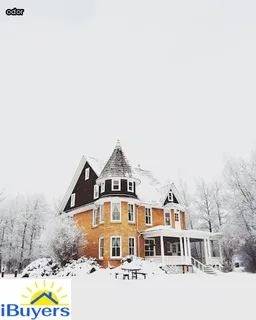
Smoke damage can be particularly damaging to the structure and furnishings of your home, as it is made up of tiny particles that can penetrate deep into surfaces. Smoke from burning materials such as wood, plastics, fabrics, and even paint can leave behind an unpleasant odor and a discolored residue.
Unattended smoke damage can also lead to permanent staining and corrosion in some cases. To avoid further damage, it is important to identify the source of the smoke and take steps to mitigate its effects as soon as possible.
In order to determine the extent of smoke damage in your home, you should inspect furniture and other items for discoloration or stains, and check walls and ceilings for signs of discoloration or soot build-up. You should also check carpets, rugs, curtains, clothing, wallpaper and other textiles for any discoloration or odors that may indicate smoke damage.
Once you have identified the source of the smoke damage in your home's structure or furnishings, you should take immediate action to reduce its impact by ventilating affected areas with fresh air as much as possible. Cleaning affected areas with a damp cloth will also help remove residues while deodorizing any lingering smell from smoke damage.
If necessary, professional cleaning services may be needed to restore furniture or other items that have been heavily damaged by smoke. By taking these steps immediately after identifying smoke damage in your home's structure and furnishings, you can prevent further losses from occurring due to this type of destruction.
Smoke damage can be a major issue in the home, and it's important to know what items may suffer from the smoke. Many types of furniture, including upholstered furniture, mattresses, pillows, carpets, and curtains are all at risk of smoke damage due to their fabric composition.
Wood items such as cabinets and wooden furniture can also suffer smoke damage if not protected properly. Electronics such as televisions and appliances may also be vulnerable to smoke damage if not cleaned promptly.
Additionally, any type of wall covering or paint may become discolored from smoke residue. To identify if an item has been damaged by smoke, look for discoloration or a strong smell of smoke that won't go away even after cleaning the item.
Mitigating this type of damage can be difficult but is necessary in order to protect your home and belongings from further destruction.

Cleaning up after a fire can be an arduous and emotional process. To make the process easier, it is important to understand the steps involved in identifying and mitigating smoke damage in your home.
Smoke damage is caused by soot, odors, and other corrosive materials that are released from burning objects. To identify smoke damage, look for discoloration on walls, ceilings, or any other surfaces.
You may also notice a lingering smell or discolored streaks on windows and doors. Once you have identified the smoke damage, you should take action to mitigate its effects as soon as possible.
This can include using cleaning supplies such as sponges, scrub brushes and detergents to remove soot from walls and furniture. Ozone generators are also effective at eliminating odors caused by smoke damage while air purifiers can help filter out particulates that can cause respiratory illnesses.
Taking these steps will help ensure a safe environment for your family once the fire has been extinguished.
After a fire, smoke damage is often the most extensive form of destruction. It can permeate walls, fabrics, furniture, and even electronics.
It is essential to identify and mitigate smoke damage as soon as possible after a fire to salvage any valuables or possessions in the home. One way to identify smoke damage is through smell; however, it may be difficult to detect on certain surfaces or items such as carpets and textiles.
Additionally, visual inspection can also help in detecting smoke damage on surfaces such as walls and ceilings. To mitigate smoke damage, it is important to remove all affected items from the house and clean them with a mild detergent solution before restoring them to their original condition.
Cleaning electronics with rubbing alcohol should also be considered for salvaging valuable items like televisions, computers, and game consoles. Finally, the use of dehumidifiers and air purifiers are also recommended for reducing smoky odors in the home after a fire.
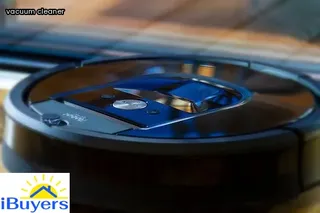
Smoke damage can have a devastating effect on your home, leading to costly repairs and replacements. To protect your home against future smoke damage, it is important to identify and mitigate the damage as soon as possible.
Start by ventilating the area affected by smoke, allowing fresh air to circulate and reduce the intensity of the smoke odor. If needed, use a dehumidifier to remove moisture from walls, carpets, and other surfaces.
Also, use an air purifier with a HEPA filter to capture airborne particles and odors. Clean any surfaces that have been exposed to smoke using gentle cleaners or detergents specifically designed for smoke-damaged materials.
Finally, consider investing in fire alarms or detectors that can alert you if there is another instance of smoke in your home in the future. Taking these steps will help you protect your home against further damage from smoke.
Soot, charred materials, and ash are all common results of smoke damage in a home. Identifying the differences between these three components is key to understanding how to properly mitigate the damage caused by smoke.
Soot is a general term for fine particles of ash which can result from incomplete combustion of organic matter. It often appears as a black residue that can coat surfaces or stick to walls or other items.
Charred materials refer to materials damaged by fire; they may appear as individual particles or large chunks depending on what materials were affected by the flames. Finally, ash is the powdery material that remains after something has been burned completely, such as ashes from a fireplace.
It is important to understand the differences between soot, charred materials, and ash when assessing smoke damage in order to choose the right method for cleanup and repair in each case.
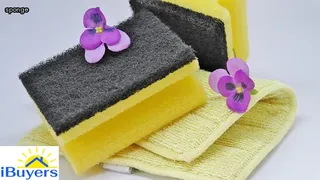
The best way to prevent costly repairs due to smoke damage in your home is by being proactive. Regularly inspect your home for any signs of smoke damage, such as discoloration on walls or ceilings, and take immediate action if you notice anything out of the ordinary.
To identify more subtle signs of smoke damage, use a moisture meter to measure the level of humidity in the air and look for any water spots or stains on ceiling tiles or near windowsills. If the humidity level is higher than normal, it might be an indication that there is smoke damage present in your home.
To mitigate potential damage from smoke, use an extractor fan when cooking with oil or frying food, and never leave candles burning unattended. Additionally, consider installing fire alarms and carbon monoxide detectors throughout your home to alert you to any potential fire hazards before they become severe.
Understanding the severity of fire damage is essential to properly identifying and mitigating smoke damage in your home. It is important to bear in mind that smoke damage can be more costly and difficult to repair than actual fire damage, as it penetrates deeper into the structure of your home.
To accurately identify and mitigate smoke damage, it is important to inspect ceilings, walls, floors and furniture for discoloration or staining caused by soot and ash. Additionally, you should look for odors resulting from the smoke that may have impregnated carpets, clothing, bedding and furniture.
Any items saturated with smoke should be replaced as they are unlikely to return to their original condition. Furthermore, any HVAC systems should be thoroughly inspected and cleaned if necessary as they are particularly prone to smoke contamination.
For serious cases of smoke damage, you may need professional help in order to properly assess the extent of the issue and ensure that your home is safe again.
Smoke damage can be a difficult problem to tackle in your home. It can leave an unpleasant smell and discolored surfaces, making it difficult to feel comfortable in your own home. Fortunately, there are steps that you can take to identify and mitigate the smoke damage in your house.
The first step is to identify the source of the smoke damage. This could occur from something like a fire, cigarette smoke, or even cooking fumes. Once you have determined the source of the smoke damage, you will need to assess how extensive it is and determine if any items must be removed or replaced due to irreparable damage.
After identifying what needs to be done, you can start addressing the smoke damage directly. Start by using fans and dehumidifiers to get rid of any lingering odors that may still be present in the air. You should also do a thorough cleaning of any surfaces that have been affected by the smoke damage, such as carpets, curtains, furniture upholstery and walls.
These areas should be vacuumed and wiped down with a cloth dampened with a mild detergent solution or vinegar solution before being washed with clean water. In addition, applying an odor neutralizing product can help eliminate any remaining smells associated with the smoke damage. Taking these steps will help ensure that your home is free from lingering smoke damage, so you can enjoy it once again!.

It's important to identify and mitigate smoke damage in the home before determining whether it is safe to sleep there. Smoke damage can be identified by discoloration and a strong odor, as well as physical signs like warping and blistering on walls, ceilings, and other surfaces.
It is important to address these issues quickly because smoke particles can be harmful when inhaled. To mitigate smoke damage, homeowners should start by removing any items that have been damaged or contaminated by the smoke.
Additionally, proper ventilation is key to preventing further spread of the particles. After ventilation has been addressed, homeowners may need to clean their walls, floors, and furniture with detergent or an appropriate cleaner designed for smoke damage.
After mitigating the smoke damage, it is safe to sleep in the house if all of the affected items have been removed or properly cleaned.
The answer to this question is yes, smoke damage can go away, but it depends on the severity of the damage and how quickly you take action. Smoke damage can cause discoloration to walls, furniture and other surfaces, as well as a lingering smell that can be difficult to remove.
Identifying smoke damage early and taking necessary steps to mitigate its effects can help prevent further damage from occurring. The first step in identifying and mitigating smoke damage is assessing the affected areas of your home for discoloration or odors.
If any of these signs are present, start by cleaning the area with a damp cloth or an all-purpose cleaner recommended for smoke-damaged surfaces. To help remove any remaining odor, use baking soda or activated charcoal containers throughout your home.
Finally, consider investing in an air purifier to filter out any residual particles that could be causing the smell. Taking these steps will help reduce and repair any smoke-related issues in your home.